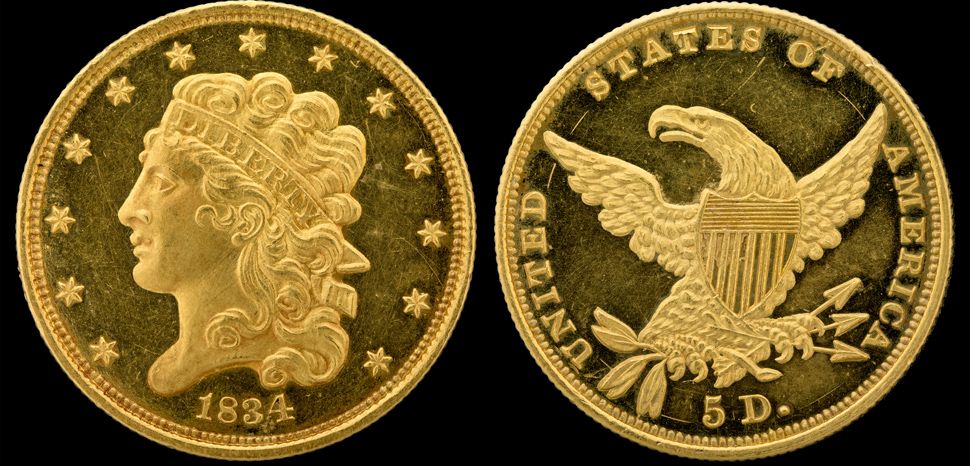In terms of grand strategy, the relevance of gold is often underestimated. To a certain extent, this misperception is a consequence of the disdain publicly expressed by some prominent economists. For instance, Lord John Maynard Keynes held that gold was a ‘barbaric relic,’ whereas former Federal Reserve Chairman Ben Bernanke claimed the yellow metal is stockpiled in vaults all over the world merely because of ‘tradition.’ The view that gold is like any other ordinary commodity is utterly reductionist and its corresponding limitations highlight the importance of developing a wider and deeper understanding.
The nature of gold – a heavy element produced by celestial phenomena like supernovae and the clash of neutron stars – goes well beyond that. In fact, since the very dawn of civilization, it has been regarded as a substance that conveys wealth, power, prosperity, splendor, and prestige. Its use in coinage, jewelry, bullion trade, and royal crowns are clear examples of that reality. In other words, it can be argued that the aurous metal possesses profound political, social, cultural and psychological properties. Therefore, its strategic weight is superior to its market value alone.
For example, during periods of geopolitical turmoil, economic uncertainty, and financial volatility, gold is typically seen – by nation-states, financial entities, banking institutions, and private individuals – as an asset that turns out to be useful to hedge unpredictable risks. Hence, it can act as a protective shield when it comes to preserving value.
Furthermore, gold – along with silver – has been employed as a monetary component in literally countless historical contexts because it meets several criteria: it is portable, enduring, scarce, malleable, reliable, and universally accepted. Not surprisingly, renowned goldsmiths frequently became bankers. This reveals that several cultures have reached similar conclusions concerning gold’s intrinsic utilitarian value and symbolic meaning. Moreover, unlike fiat currencies, gold cannot be endlessly printed.
From a long-range analytical perspective, all of the above explains why gold has provided an unmatched monetary stability throughout the history of mankind and why, just like the United States’ gold reserves played a decisive role in the rise of the US dollar as the dominant reserve currency, the yellow metal is one of the very few credible competitors that could potentially challenge the global supremacy of the US currency.
Tellingly, even though the US does not possess one of the largest monetary reserves – one of the luxuries Washington can afford as exclusive issuer of the world’s hegemonic currency – its holdings of more than 8,000 metric tons of gold represent 74.5% of its total foreign-exchange reserves, according to the World Gold Council.

Global Gold Holdings (World Gold Council)
The accumulation of gold by the countries that are ranked as the world’s greatest powers and the strongest economies reveals that – whereas scholars and journalists are still discussing the theoretical aspects of gold – central banking effectively regards gold as money. It can even be pointed out that the important share gold has reached as a component of several national monetary reserves indicates that confidence in paper money is not entirely absolute.
Nevertheless, the official numbers reported by the World Gold Council need to be taken with a grain of salt. In fact, some analysts claim that China’s actual gold reserves could be substantially higher. In fact, there are even unconfirmed rumors about Beijing being actively involved in a covert gold purchasing program.
Accordingly, the significance of gold for national interests has been consistently recognized in strategic nerve centers, either tacitly or explicitly. For example, the legendary Montagu Norman –Governor of the Bank of England for more than 20 years during the first half of the 20th century and chief architect of the Bank of International Settlements – believed gold represented a formidable bulwark against forms of money he regarded as either inherently unsound or even as outright fraudulent. Accordingly, he even had England’s gold reserves stored in a fortress specifically built for that purpose. Those special vaults would provide a layer of protection from threats like popular revolts or external aggression. This unveils a link between gold – as a key component of national wealth – and national security.
Another fact worth emphasizing is that US gold reserves are not kept in civilian facilities like bank safes or secure warehouses. Instead, they are held in military bases like Fort Knox and West Point. Fed senior executives might claim gold is relatively unimportant, but facts on the ground suggest otherwise.
The geopolitical and strategic dimension of gold in the present century is also clear in episodes like the Bank of England’s denial to authorize the retirement of Venezuelan gold by the Maduro regime. This measure is of course aligned with the UK’s foreign policy concerning the controversial Venezuelan crisis. In this case, diplomatic factors influenced an economic decision. In other words, the economic sphere of markets and the political realm of nation-states are closer than commonly believed according to Classical, Neoclassical, and even Keynesian economists.
Gold can be useful in offensive strategic maneuvers. Since it entails the potential to reshuffle how the balance of power works in the complex arena where geopolitics and finance meet, it is being seen by the Eurasian powers as an asset that could be eventually weaponized in order to challenge US pre-eminence in the global financial order. Likewise, gold has also defensive properties. If it is kept in secure locations, physical gold is difficult to destroy. The same cannot be said about paper currencies and their corresponding financial circuits, which are vulnerable to systemic disruption. In other words, the yellow metal can be instrumental in the esoteric realm of financial warfare.
Furthermore, gold can also play a meaningful role in regional and local geopolitical dynamics. For instance, the control of gold deposits – and the political power, social influence, hard cash, weaponry, alliances, and international trade partners that come with it – by a Sudanese paramilitary force (the so-called ‘Rapid Support Forces’) is one of the key factors that have allowed that militia to consolidate its position as the dominant group that, regardless of formal civilian governmental structures, and to take de facto control of Sudan, undermining the legitimacy, viability, and effectiveness of state institutions.
The Prospects of Gold in a Foreseeable Future
The so called ‘demonetization’ of gold is a fairly recent phenomenon. The latest iteration of a global gold standard was dismissed when President Nixon refused to deliver gold in exchange for dollars, as was agreed when the Bretton Woods framework was forged through multilateral negotiations.
However, the prospects of an eventual restoration of a gold standard are being discussed nowadays. This is hardly surprising after the sharp financial crisis that took place a decade ago. Other factors worth analyzing regarding this matter are the inherent volatile nature of contemporary financial markets – which are vulnerable to several kinds of disruptions – the systemic accumulation of unpayable debts, and the implementation of quantitative easing monetary policies that, far from correcting structural imbalances, are actually deepening them. This reality fosters reasonable doubts about the long-term prospects of fiat money, in general, and the monetary hegemony of the US dollar, in particular.
Besides, the redefinition of certain financial dynamics as issues that are being assessed in terms of high strategy because of their ramifications in the field of international and national security is also a phenomenon that cannot be overlooked. Even though the dollar’s position still seems solid for the foreseeable future, the hypothetical rise of a parallel financial order anchored to gold as a monetary unit is a possibility that needs to be taken into account, especially considering there are geopolitical incentives related to actions meant to challenge, diminish, or erode the dollar’s global dominance.
It is too early to tell if gold can replace the US dollar at some point within the next few decades, but at least it is clear that the aureus metal’s singular attributes enhance its prospects. After all, it has become once more an attractive asset for national states, companies, and even individuals.
In the debate concerning the future of monetary hegemony, it has been argued that a global financial order based on gold as its cornerstone could lead to an international system more stable in terms of geopolitical tension or even military conflict. For instance, the late Swiss banker Ferdinand Lips explained that, since gold is an asset whose value is determined by its natural scarcity, it promotes fiscal responsibility and sound monetary policies, which would restraint the possibility of resorting to endless credit and perpetual debt – both closely associated to fiat money – in order to artificially inflate military budgets and, consequently, war expenditures.
If gold reassumes a central role in worldwide financial markets as a result of a multilateral consensus negotiated amongst the greatest powers – this could happen in the aftermath of a new major financial crisis of international proportions – some players would evidently be better positioned than others. In this scenario, perhaps the golden rule would apply. In other words, the players that control the largest gold holdings would have the chance to define the essential rules in the structural rearrangement of global financial governance.
The views expressed in this article are those of the author alone and do not necessarily reflect Geopoliticalmonitor.com or any institutions with which the author is associated.




